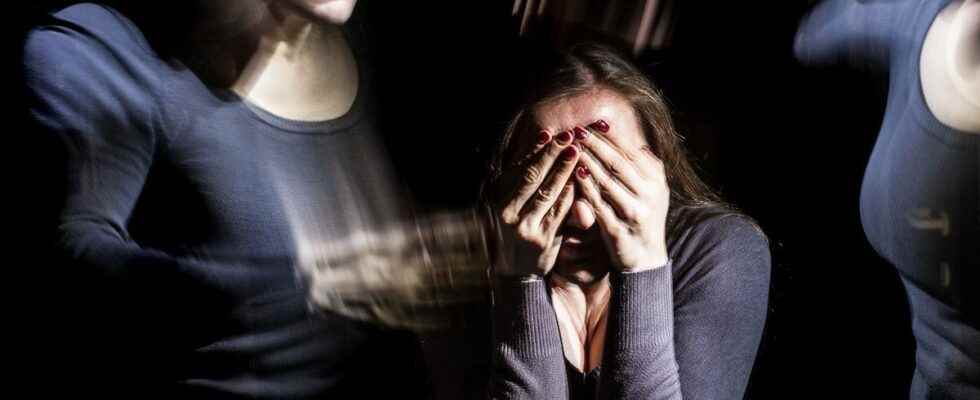Published ,
Reading 2 mins.
in collaboration with
Sabrina Philippe (Psychologist)
Hallucinations, delusions… Paraphrenia is a psychiatric disorder that superimposes these manifestations on reality. However, those affected do not have personality disorders, as in the case of schizophrenia for example. The point with Sabrina Philippe, psychologist and member of the expert committee of Doctissimo.
Paraphrenia is a rare mental illness. It is highlighted in the new Canal+ series, Infiniti. Explanations on this mental pathology.
What is paraphrenia?
Paraphrenia was clearly defined at the beginning of the 20th century as a “intermediate form of chronic delirium”, between schizophrenia and paranoia. “In paraphrenia, there is no degradation of the mental structure, which is what distinguishes it from schizophrenia” explains Sabrina Philippe, psychologist and member of the Doctissimo expert committee. “Concretely, the person remains himself, but he loses contact with reality through his crises” adds the specialist. A state that is reflected in the genesis of the word, which in Greek means “beside his mind”.
An invasion of the mind
A person with a paraphrenic disorder may be perfectly fine and then go into crisis. For Sabrina Philippe, “it is a chronic delirious psychosis punctuated by delirious puffs, which invade the sick person”. There are four types:
- systematic paraphrenia, very close to paranoia;
- expansive paraphrenia, which resembles manic-depressive psychosis;
- confabulating paraphrenia, without hallucination, but where we essentially find memories of things that did not happen;
- And fantastic paraphrenia.
“If the disease can affect all the senses, paraphrenia mainly concerns the senses of hearing. adds the psychologist.
“The differential diagnosis is frequent in this kind of situation, it is difficult to affirm that the patient is formally affected by this disease” according to Sabrina Philippe. “The pathology can occur following a tumour, a stroke or a neurodegenerative pathology. Some elements nevertheless make it possible to recognize it: the person remains himself despite his delusions, which can be visual or auditory hallucinations, mainly, which do not necessarily disturb the patient much..
What are the treatments ?
Paraphrenia mainly affects young adults, between 30 and 45 years old. Sometimes the disease is not bothersome or even regresses on its own, and the patients do not require treatment. But if the crises are important, a “neuroleptic drug treatment will be indicated“says the psychologist. Specialized care will therefore be necessary, with a prescription for fluphenazine.
